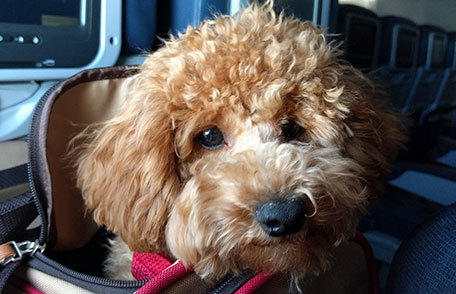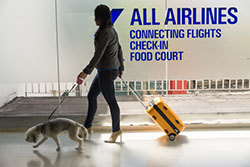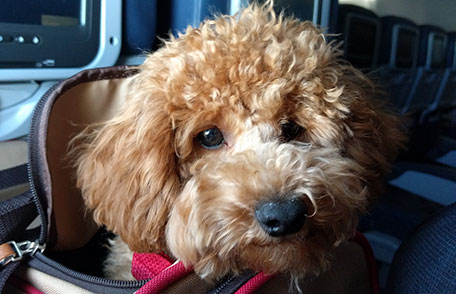
Taking your dog or cat on a flight abroad? Make sure you have your pet’s documents when traveling internationally and returning home to the United States. Leave yourself plenty of time before the trip to take care of your pet’s required medical care and paperwork. Remember to start the process early.
First Stop—Your Vet’s Office
If you are traveling internationally, tell your veterinarian about your plans as soon as possible. Together, you can make sure your pet is healthy enough to travel and meets the requirements for your destination country and for your return to the United States. Requirements may include
- Blood tests
- Vaccinations
- Microchips for identification
- Permits
- Health certificates
Airlines and countries often have different requirements, so make sure you know what the specific ones are.
Research How to Fly with Your Pet
Give yourself plenty of time to do your homework before your trip. A great place to start is the Pet Travel website of the US Department of Agriculture’s Animal and Plant Health Inspection Service (APHIS).
Airlines
Different airlines have different rules about whether and how a pet can travel. Depending on the airline, your pet may be able to travel on your flight either in the cabin or in the cargo hold. Confirm this ahead of time with your airline.
On airlines that allow pets to travel, only small dogs and cats that can fit in special carriers under the seat are allowed in the cabin. Their owners must care for them during any layovers. Some airlines may not allow them in the cabin and will transport them as cargo in a heated and ventilated hold. Cats and dogs may travel and rest better this way, since it is quieter and darker, according to the International Air Transport Association.

Research how to fly with your pet. Photo credit: Misty Ellis, CDC
Another way for your pet to travel is on a separate flight as an air cargo shipment. If this is your preference, or a requirement based on your dog’s size or the destination country’s rules, then get your pet used to the shipping kennel ahead of time. Make sure the door latches securely to avoid any mishaps in transit. Ask your veterinarian for advice about when to give food and water. If a pet is traveling as an air cargo shipment, you must make arrangements for pickup at the final destination.
Some US carriers don’t allow pets to be shipped between May and September, the hottest months for animals to travel in the Northern Hemisphere. No matter what time of year, safety is always a concern when pets travel by airplane. If absolutely necessary for a dog or cat to travel in cargo, it must be in a sturdy container with enough room to stand and sit, to turn around normally while standing, and to lie down in a natural position. For more information, visit the US Department of Agriculture pet travel website.
When waiting for a connecting flight, you may have to care for a pet traveling with you in the cabin, while the airline staff or ground handlers care for a pet traveling in cargo. Check with your airline(s) beforehand to see what is required.
Read the full article at: www.cdc.gov











